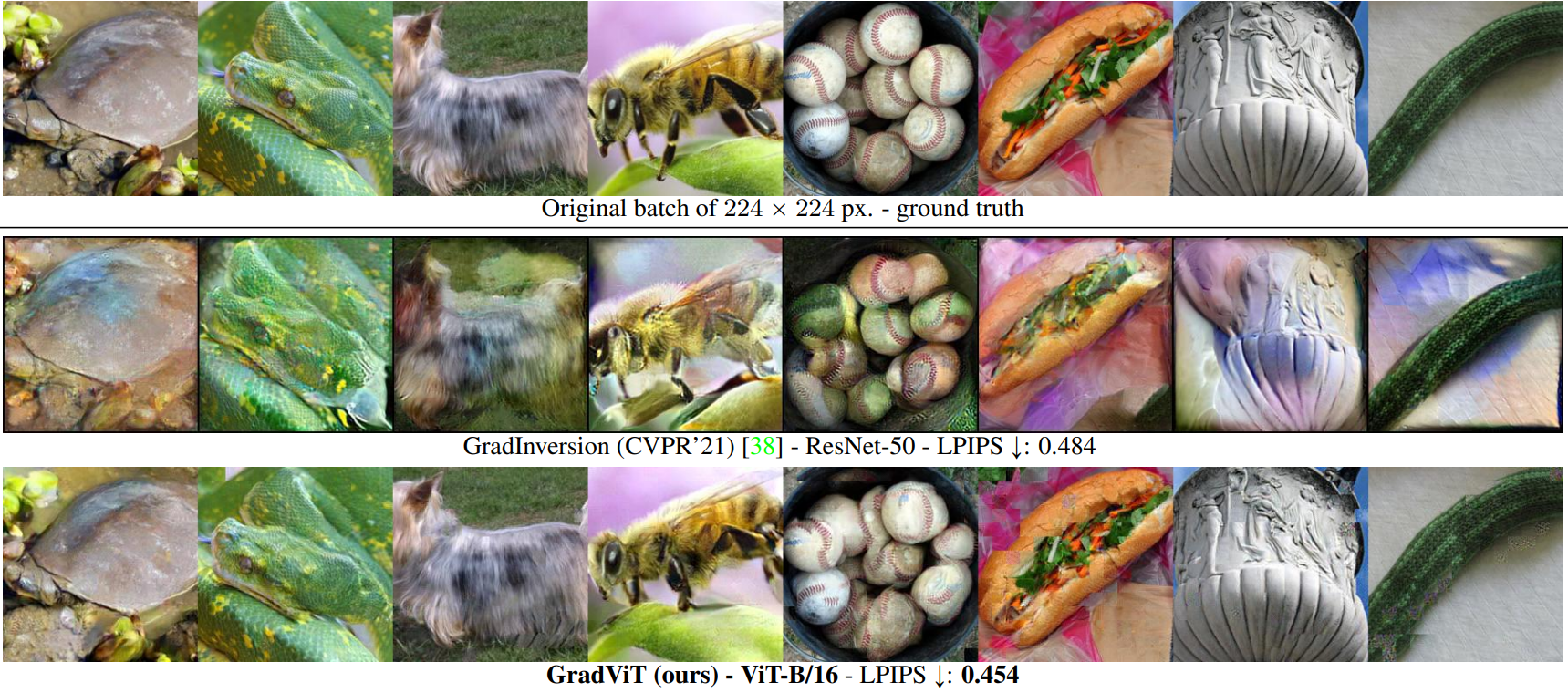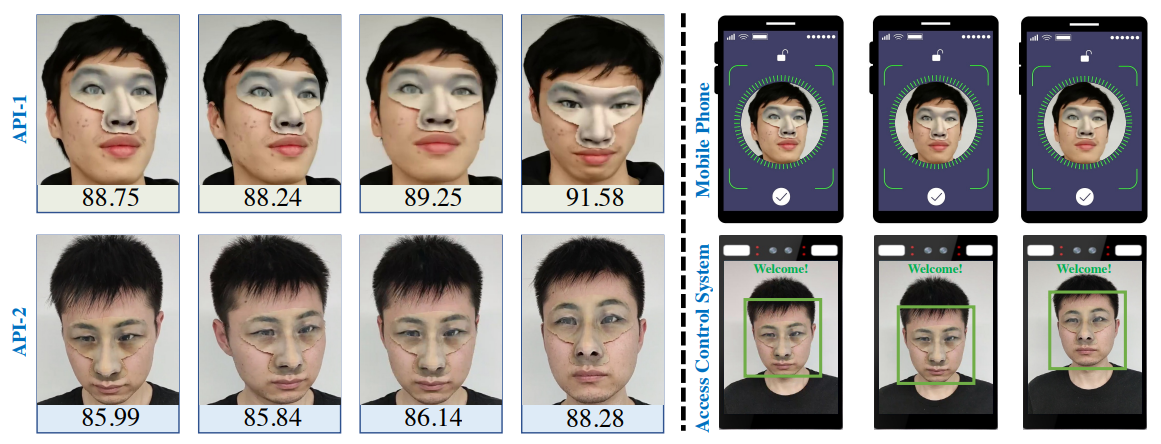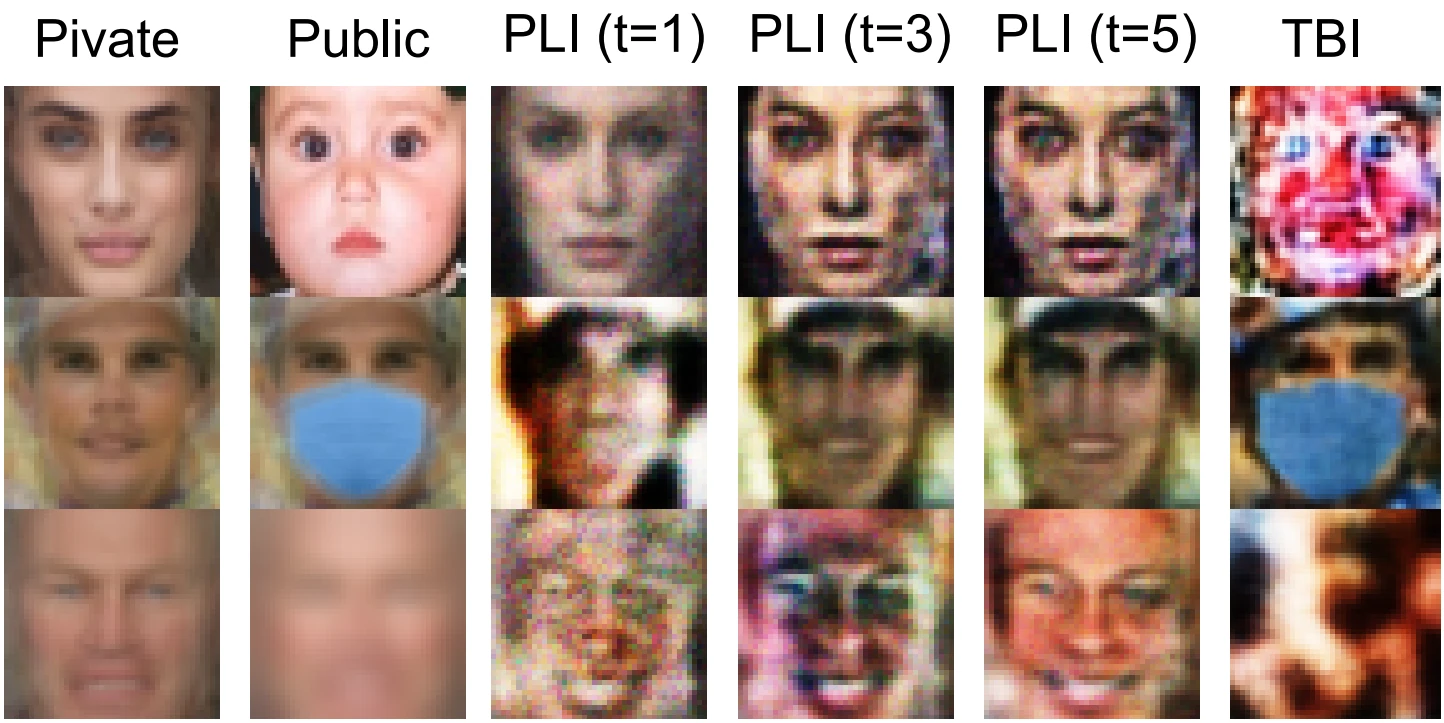Cheatsheet of AI security papers from CVPR ’22
In my AI security @ CVPR ’22 blog post series, I cover all AI security papers that were presented at the conference. This post is a cheatsheet with links. The papers are categorized by their contribution, using the same categorization as the blog posts: each clickable heading takes you to the blog post covering the respective category.
Adversarial attacks
Classic adversarial attacks
- Byun et al.: Improving the Transferability of Targeted Adversarial Examples through Object-Based Diverse Input
- Cai et al.: Zero-Query Transfer Attacks on Context-Aware Object Detectors
- Dhar et al.: EyePAD++: A Distillation-based approach for joint Eye Authentication and Presentation Attack Detection using Periocular Images
- Feng et al.: Boosting Black-Box Attack with Partially Transferred Conditional Adversarial Distribution
- He et al.: Transferable Sparse Adversarial Attack
- Jia et al.: LAS-AT: Adversarial Training with Learnable Attack Strategy
- Jin et al.: Enhancing Adversarial Training with Second-Order Statistics of Weights
- Lee et al.: Masking Adversarial Damage: Finding Adversarial Saliency for Robust and Sparse Network
- Li et al.: Subspace Adversarial Training
- Liu et al.: Practical Evaluation of Adversarial Robustness via Adaptive Auto Attack
- Lovisotto et al.: Give Me Your Attention: Dot-Product Attention Considered Harmful for Adversarial Patch Robustness
- Luo et al.: Frequency-driven Imperceptible Adversarial Attack on Semantic Similarity
- Pang et al.: Two Coupled Rejection Metrics Can Tell Adversarial Examples Apart
- Sun et al.: Exploring Effective Data for Surrogate Training Towards Black-box Attack
- Tsiligkaridis & Roberts: Understanding and Increasing Efficiency of Frank-Wolfe Adversarial Training
- Xiong et al.: Stochastic Variance Reduced Ensemble Adversarial Attack for Boosting the Adversarial Transferability
- Vellaichamy et al.: DetectorDetective: Investigating the Effects of Adversarial Examples on Object Detectors
- Wang et al.: DST: Dynamic Substitute Training for Data-free Black-box Attack
- Xu et al.: Bounded Adversarial Attack on Deep Content Features
- Yu et al.: Towards Robust Rain Removal Against Adversarial Attacks: A Comprehensive Benchmark Analysis and Beyond
- C. Zhang et al.: Investigating Top-k White-Box and Transferable Black-box Attack
- Jianping Zhang et al.: Improving Adversarial Transferability via Neuron Attribution-Based Attacks
- Jie Zhang et al.: Towards Efficient Data Free Black-box Adversarial Attack
- Zhou et al.: Adversarial Eigen Attack on Black-Box Models
Certifiable defense
- Chen et al.: Towards Practical Certifiable Patch Defense with Vision Transformer
- Salman et al.: Certified Patch Robustness via Smoothed Vision Transformers
Non-classic adversarial attacks
- Berger et al.: Stereoscopic Universal Perturbations across Different Architectures and Datasets
- Chen et al.: NICGSlowDown: Evaluating the Efficiency Robustness of Neural Image Caption Generation Models
- Dong et al.: Improving Adversarially Robust Few-Shot Image Classification With Generalizable Representations
- Gao et al.: Can You Spot the Chameleon? Adversarially Camouflaging Images from Co-Salient Object Detection
- Huang et al.: Shape-invariant 3D Adversarial Point Clouds
- Li et al.: Robust Structured Declarative Classifiers for 3D Point Clouds: Defending Adversarial Attacks with Implicit Gradients
- Özdenizci et al.: Improving Robustness Against Stealthy Weight Bit-Flip Attacks by Output Code Matching
- Pérez et al.: 3DeformRS: Certifying Spatial Deformations on Point Clouds
- Ren et al.: Appearance and Structure Aware Robust Deep Visual Graph Matching: Attack, Defense and Beyond
- Schrodi et al.: Towards Understanding Adversarial Robustness of Optical Flow Networks
- Thapar et al.: Merry Go Round: Rotate a Frame and Fool a DNN
- Wang et al.: Bandits for Structure Perturbation-based Black-box Attacks to Graph Neural Networks with Theoretical Guarantees
- Wei et al.: Cross-Modal Transferable Adversarial Attacks from Images to Videos
- Zhang et al.: 360-Attack: Distortion-Aware Perturbations From Perspective-Views
- Zhou & Patel: Enhancing Adversarial Robustness for Deep Metric Learning
Physical adversarial attacks
- Hu et al.: Adversarial Texture for Fooling Person Detectors in the Physical World
- Liu et al.: Segment and Complete: Defending Object Detectors against Adversarial Patch Attacks with Robust Patch Detection
- Suryanto et al.: DTA: Physical Camouflage Attacks using Differentiable Transformation Network
- Zhang et al.: On Adversarial Robustness of Trajectory Prediction for Autonomous Vehicles
- Zhong et al.: Shadows can be Dangerous: Stealthy and Effective Physical-world Adversarial Attack by Natural Phenomenon
- Zhu et al.: Infrared Invisible Clothing: Hiding from Infrared Detectors at Multiple Angles in Real World
Backdoor/Trojan attacks
- Chen et al.: Quarantine: Sparsity Can Uncover the Trojan Attack Trigger for Free
- Feng et al.: FIBA: Frequency-Injection based Backdoor Attack in Medical Image Analysis
- Guan et al.: Few-shot Backdoor Defense Using Shapley Estimation
- Liu et al.: Complex Backdoor Detection by Symmetric Feature Differencing
- Qi et al.: Towards Practical Deployment-Stage Backdoor Attack on Deep Neural Networks
- Saha et al.: Backdoor Attacks on Self-Supervised Learning
- Tao et al.: Better Trigger Inversion Optimization in Backdoor Scanning
- Walmer et al.: Dual-Key Multimodal Backdoors for Visual Question Answering
- Wang et al.: BppAttack: Stealthy and Efficient Trojan Attacks against Deep Neural Networks via Image Quantization and Contrastive Adversarial Learning
- Zhao et al.: DEFEAT: Deep Hidden Feature Backdoor Attacks by Imperceptible Perturbation and Latent Representation Constraints
Model inversion attacks
- Del Grosso et al.: Leveraging Adversarial Examples to Quantify Membership Information Leakage
- Hatamizadeh et al.: GradViT: Gradient Inversion of Vision Transformers
- Kahla et al.: Label-Only Model Inversion Attacks via Boundary Repulsion
- Kim: Robust Combination of Distributed Gradients Under Adversarial Perturbations
- J. Li et al.: ResSFL: A Resistance Transfer Framework for Defending Model Inversion Attack in Split Federated Learning
- Z. Li et al.: Auditing Privacy Defenses in Federated Learning via Generative Gradient Leakage
- Lu et al.: APRIL: Finding the Achilles’ Heel on Privacy for Vision Transformers
- Ng et al.: NinjaDesc: Content-Concealing Visual Descriptors via Adversarial Learning
- Peng et al.: Fingerprinting Deep Neural Networks Globally via Universal Adversarial Perturbations
- Sanyal et al.: Towards Data-Free Model Stealing in a Hard Label Setting
Image manipulation & deepfake detection
- Asnani et al.: Proactive Image Manipulation Detection
- Chen et al.: Self-supervised Learning of Adversarial Example: Towards Good Generalizations for Deepfake Detection
- Hu et al.: Protecting Facial Privacy: Generating Adversarial Identity Masks via Style-robust Makeup Transfer
- Jia et al.: Exploring Frequency Adversarial Attacks for Face Forgery Detection
- Shiohara & Yamasaki: Detecting Deepfakes with Self-Blended Images
- Wu et al.: Robust Image Forgery Detection Over Online Social Network Shared Images
Subscribe
Enjoying the blog? Subscribe to receive blog updates, post notifications, and monthly post summaries by e-mail.





